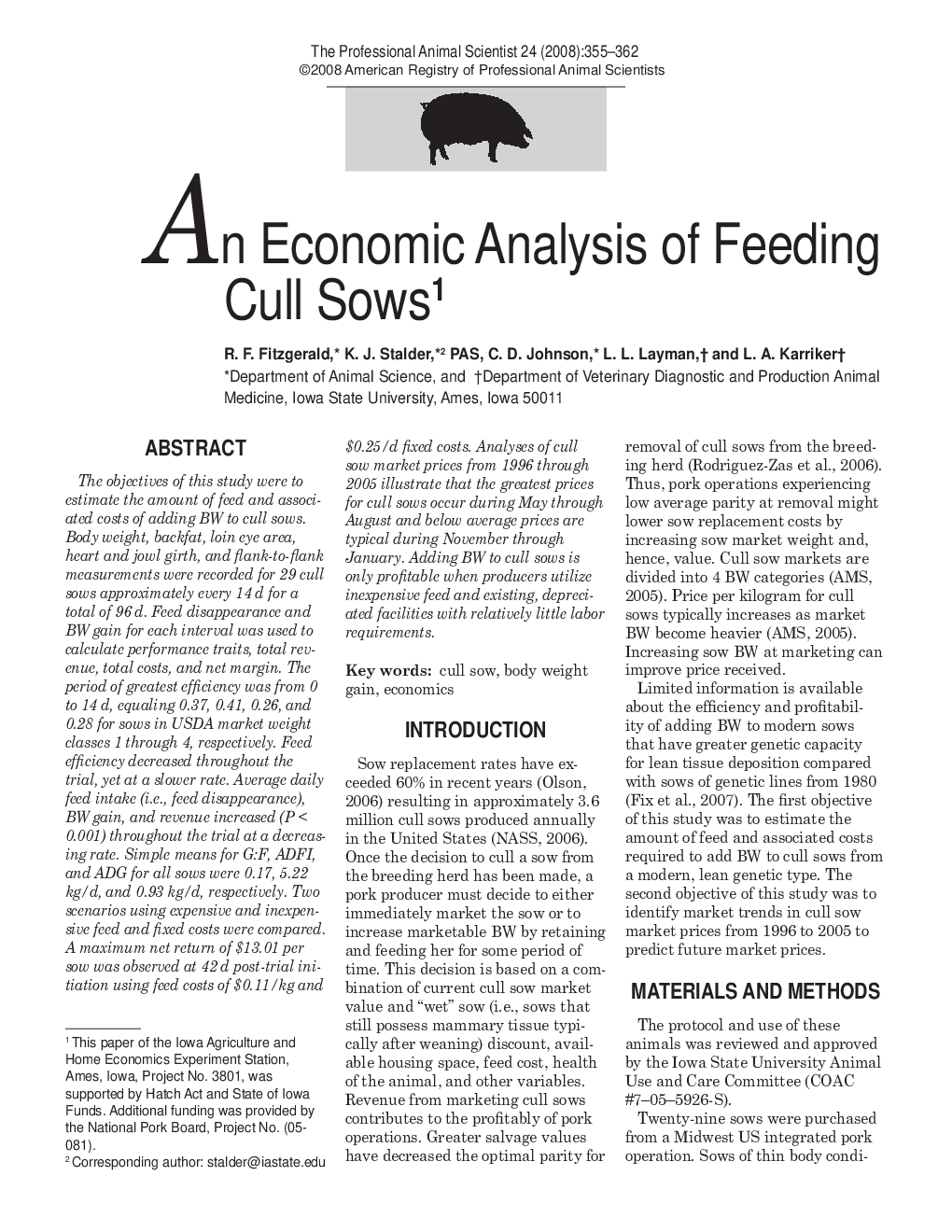| کد مقاله | کد نشریه | سال انتشار | مقاله انگلیسی | نسخه تمام متن |
|---|---|---|---|---|
| 2454342 | 1110384 | 2008 | 8 صفحه PDF | دانلود رایگان |
عنوان انگلیسی مقاله ISI
An Economic Analysis of Feeding Cull Sows1
دانلود مقاله + سفارش ترجمه
دانلود مقاله ISI انگلیسی
رایگان برای ایرانیان
موضوعات مرتبط
علوم زیستی و بیوفناوری
علوم کشاورزی و بیولوژیک
علوم دامی و جانورشناسی
پیش نمایش صفحه اول مقاله

چکیده انگلیسی
The objectives of this study were to estimate the amount of feed and associated costs of adding BW to cull sows. Body weight, backfat, loin eye area, heart and jowl girth, and flank-to-flank measurements were recorded for 29 cull sows approximately every 14 d for a total of 96 d. Feed disappearance and BW gain for each interval was used to calculate performance traits, total revenue, total costs, and net margin. The period of greatest efficiency was from 0 to 14 d, equaling 0.37, 0.41, 0.26, and 0.28 for sows in USDA market weight classes 1 through 4, respectively. Feed efficiency decreased throughout the trial, yet at a slower rate. Average daily feed intake (i.e., feed disappearance), BW gain, and revenue increased (P < 0.001) throughout the trial at a decreasing rate. Simple means for G:F, ADFI, and ADG for all sows were 0.17, 5.22 kg/d, and 0.93 kg/d, respectively. Two scenarios using expensive and inexpensive feed and fixed costs were compared. A maximum net return of $13.01 per sow was observed at 42 d post-trial initiation using feed costs of $0.11/kg $and 0.25/d fixed costs. Analyses of cull sow market prices from 1996 through 2005 illustrate that the greatest prices for cull sows occur during May through August and below average prices are typical during November through January. Adding BW to cull sows is only profitable when producers utilize inexpensive feed and existing, depreciated facilities with relatively little labor requirements.
ناشر
Database: Elsevier - ScienceDirect (ساینس دایرکت)
Journal: The Professional Animal Scientist - Volume 24, Issue 4, August 2008, Pages 355-362
Journal: The Professional Animal Scientist - Volume 24, Issue 4, August 2008, Pages 355-362
نویسندگان
R.F. Fitzgerald, K.J. PAS, C.D. Johnson, L.L. Layman, L.A. Karriker,